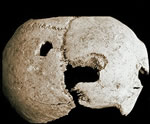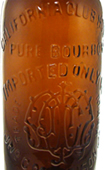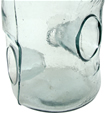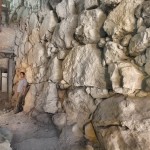Truth be told, I haven’t come up with a story for today (slow news over the long weekend), and I didn’t want to let a day go by without saying something, so I’m drumming up an entry out of a little idea I had.
Specifically, I’ve become completely obsessed with a PBS show called History Detectives. I’ve watched a half dozen episodes by now, and I inevitably sobbed at least once per hour. It features 3 different segments about an artifact its owner would like investigated.
Sometimes the stories are deeply personal, like the pencil portrait of an American pilot who sat for it while imprisoned in Stalag 17 whose granddaughter wanted to find the artist, a fellow American POW. That’s the kind of stuff that leaves me in a hopeless puddle.
Other times it’s a neat artifact with less emotional impact, but holding just as much fascination, like the house built on an old trolley car bought for a hundred bucks in the 30’s when the rail system was dissolved.
Anyway, I’ve decided I’m going to blog a review the day after each episode. They air on Monday at 10:00 pm in my market, so that means expect your weekly Watching the History Detectives missives on Tuesdays.
I’m hoping it’ll encourage people who haven’t seen it yet to seek it out (you can watch episodes online), and most importantly, it’ll give me a chance to chatter about each amazing story with a target audience of people who might actually give a rat’s ass. :boogie:





